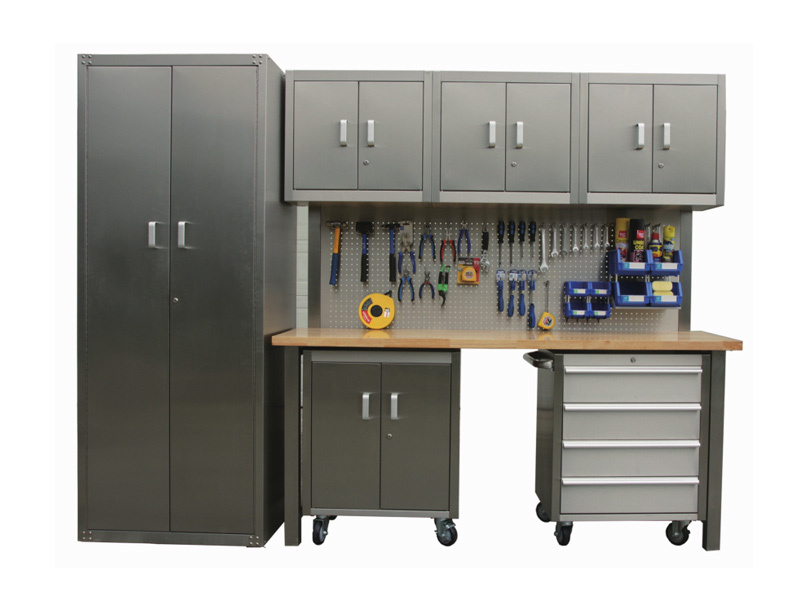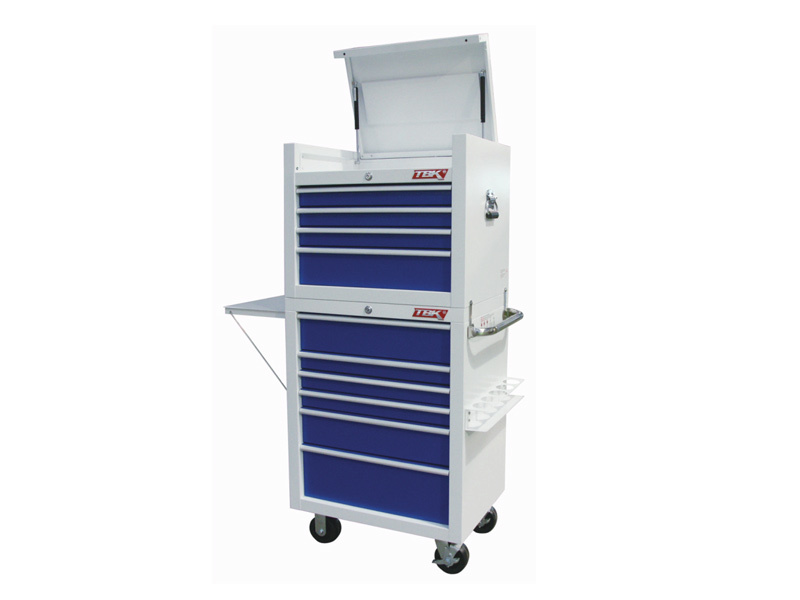Top Features to Look for in a Durable Tool Box: A Comprehensive Guide
Release time:
Nov 04,2025
Top Features to Look for in a Durable Tool Box When it comes to organizing and protecting your tools, selecting a durable tool box is paramount. Whether you are a professional tradesperson or a DIY enthusiast, investing in a quality tool box can enhance your efficiency and ensure the longevity of your tools. In this comprehensive guide, we will explore the critical features to look for in a durabl
Top Features to Look for in a Durable Tool Box
When it comes to organizing and protecting your tools, selecting a durable tool box is paramount. Whether you are a professional tradesperson or a DIY enthusiast, investing in a quality tool box can enhance your efficiency and ensure the longevity of your tools. In this comprehensive guide, we will explore the critical features to look for in a durable tool box, ensuring that you make an informed decision tailored to your specific needs.
Table of Contents
- 1. Material Construction of the Tool Box
- 2. Size and Portability Considerations
- 3. Organizational Features for Easy Access
- 4. Security Features to Protect Your Tools
- 5. Weather Resistance for All Conditions
- 6. Durability and Impact Resistance
- 7. Mobility Features: Wheels and Handles
- 8. Price vs. Quality: Finding the Right Balance
- 9. Frequently Asked Questions
1. Material Construction of the Tool Box
The **material** of a tool box significantly influences its durability and functionality. Common materials include:
Metal Tool Boxes
Metal tool boxes are often the top choice for durability. Constructed from materials like steel or aluminum, they withstand heavy use and resist wear and tear. Steel boxes, while heavier, provide maximum security and protection, making them ideal for professionals who transport high-value tools.
Plastic Tool Boxes
Plastic tool boxes are lightweight and resistant to rust. High-density polyethylene (HDPE) is a popular choice, as it offers a good balance between durability and portability. While they may not offer the same level of protection as metal boxes, premium plastic options can withstand impacts and adverse weather conditions.
Composite Materials
Some tool boxes combine materials, using a metal frame for strength with plastic or composite panels to reduce weight. This hybrid approach can maximize durability while ensuring ease of transport.
2. Size and Portability Considerations
When selecting a tool box, **size** matters. Consider both the dimensions of the box and its internal layout:
Assessing Your Tool Collection
Before making a purchase, evaluate the tools you own and how you intend to organize them. A box that is too large will waste space, while one that is too small can lead to disorganization.
Portability Features
For those who frequently move their tools between job sites, portability is crucial. Look for features like:
- **Lightweight design**: A lighter box is easier to carry, especially when filled with tools.
- **Retractable handles**: Ergonomic handles that extend and retract can make transportation more comfortable.
- **Wheeled options**: Tool boxes with wheels allow for easy transport, particularly for heavier items.
3. Organizational Features for Easy Access
An effective tool box should have **organizational features** that allow for quick access to tools. Look for:
Removable Trays and Dividers
Many tool boxes come with **removable trays** or **adjustable dividers**. These components help keep smaller tools organized and prevent larger items from shifting during transport.
Storage Compartments
Some tool boxes feature multiple compartments, allowing you to categorize tools by type or usage. This organization saves time and minimizes frustration when searching for specific items.
Transparent Lids
Tool boxes with transparent lids or sections allow users to quickly see what tools are inside without having to open every compartment.
4. Security Features to Protect Your Tools
Protecting your investment in tools is essential, especially for professionals who rely on them daily. Look for tool boxes with **robust locking mechanisms**:
Types of Locks
- **Padlock-compatible**: Some models allow for the addition of a padlock for extra security.
- **Built-in locks**: Tool boxes with built-in locks offer convenience and security in one package.
Material Strength
Consider the strength of the **locking mechanism** itself. A sturdy lock can deter theft and prevent unauthorized access to your tools.
5. Weather Resistance for All Conditions
Exposure to the elements can damage tools, so a **weather-resistant tool box** is crucial for outdoor use:
Waterproof vs. Water-Resistant
Determine whether you need a waterproof box, which can completely prevent water ingress, or a water-resistant option, which provides some level of protection against moisture.
UV Protection
If you store your tool box outdoors, opt for materials that resist UV damage. UV rays can degrade plastics and cause colors to fade, impacting the box's longevity.
6. Durability and Impact Resistance
A durable tool box should be able to withstand the rigors of daily use:
Impact-Resistant Designs
Look for tool boxes designed with **impact-resistant materials**. These boxes can endure drops and rough handling, ensuring that your tools remain safe and intact.
Manufacturer Reputation
Research brands known for their durability. A manufacturer with a solid reputation often indicates a commitment to quality, which translates to a more reliable product.
7. Mobility Features: Wheels and Handles
Mobility features can greatly enhance the usability of a tool box:
Wheels
Larger, durable wheels facilitate movement over various terrains. Consider the size and material of the wheels – rubberized options often provide better traction and support.
Handles
A good tool box should have a comfortable handle that is easy to grip. Look for padded or ergonomic designs for added comfort, especially when carrying heavier loads.
8. Price vs. Quality: Finding the Right Balance
When choosing a tool box, it is essential to find a **balance between price and quality**:
Understanding Your Budget
Set a budget that reflects your needs but be prepared to invest in quality. Often, cheaper boxes sacrifice durability and features.
Assessing Value
Consider the long-term value of a higher-priced, durable tool box. Investing in quality means fewer replacements and repairs, ultimately saving you money.
9. Frequently Asked Questions
What size tool box do I need for my tools?
The size of your tool box should accommodate your entire collection while allowing for organization. Measure your largest tools to ensure they fit comfortably.
Are plastic or metal tool boxes more durable?
Metal tool boxes generally offer better durability and security, while high-quality plastic boxes can also withstand impacts and weather conditions.
How can I protect my tools from rust?
Choose a weather-resistant tool box and regularly check for moisture. Consider using silica gel packs inside the box to absorb humidity.
Can I customize my tool box?
Many manufacturers offer customizable options, such as removable trays and dividers, allowing you to tailor the organization to your needs.
How do I maintain my tool box?
Regularly clean your tool box and check for damage. Lubricate locks and hinges to ensure smooth operation and longevity.
Conclusion
Choosing a durable tool box is essential for anyone who values their tools and wants to keep them organized and protected. By considering the material, size, organizational features, security options, weather resistance, and more, you can find a tool box that meets your specific needs. Whether you're a professional or a DIY enthusiast, investing in a quality tool box will prove invaluable in the long run, helping you work more efficiently and confidently. Remember to balance price and quality to ensure you make a purchase that serves you well for years to come.
More information





